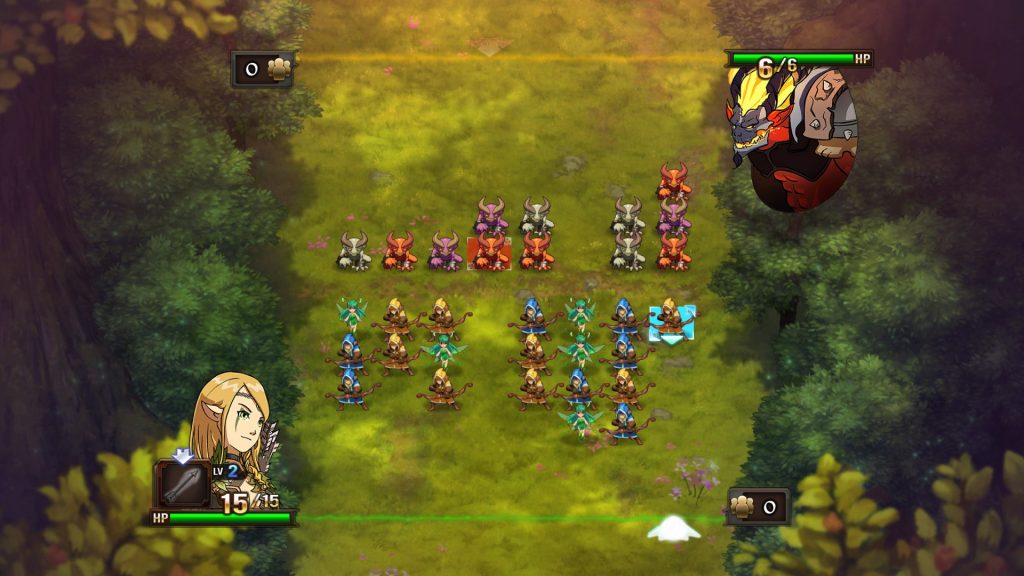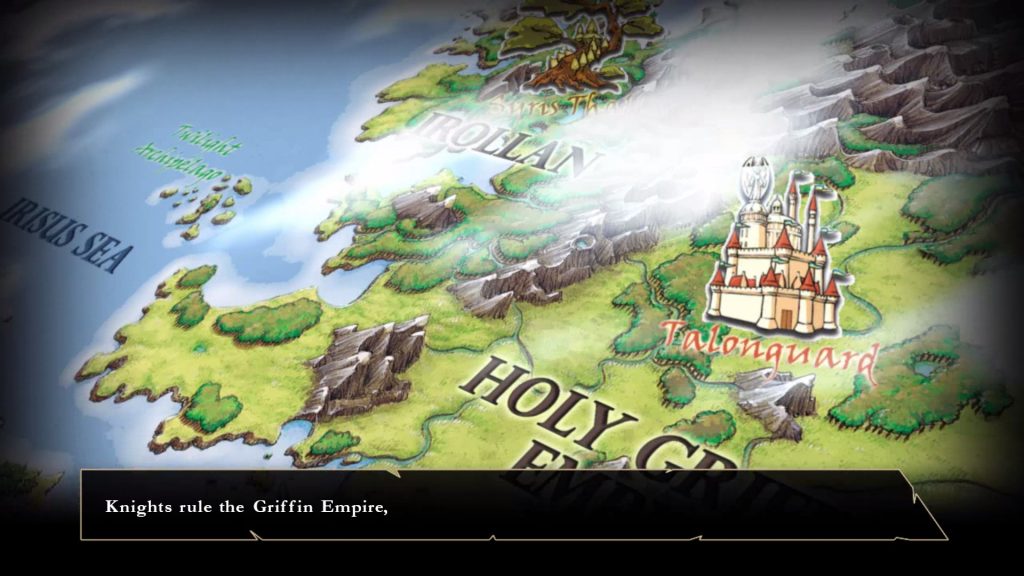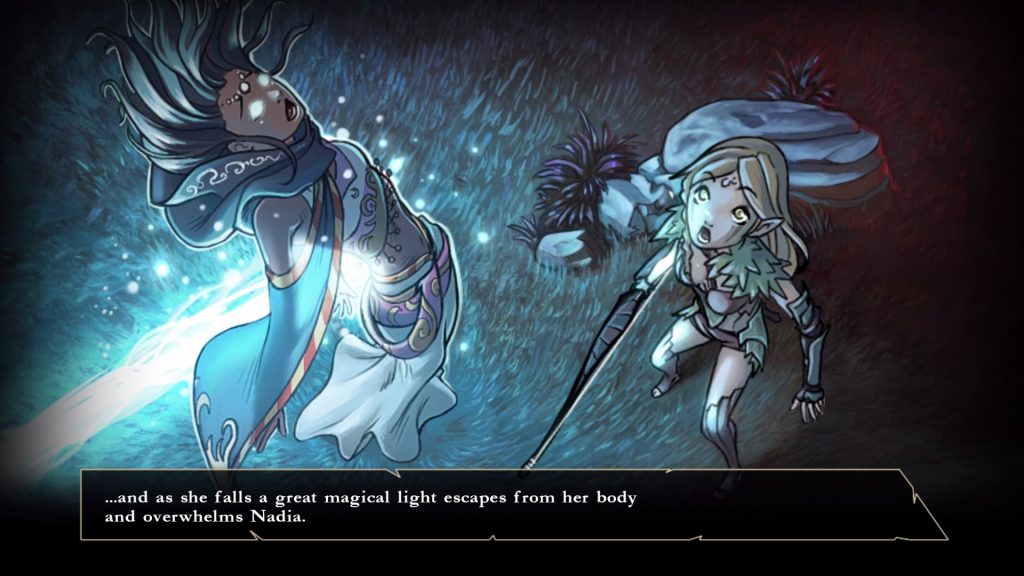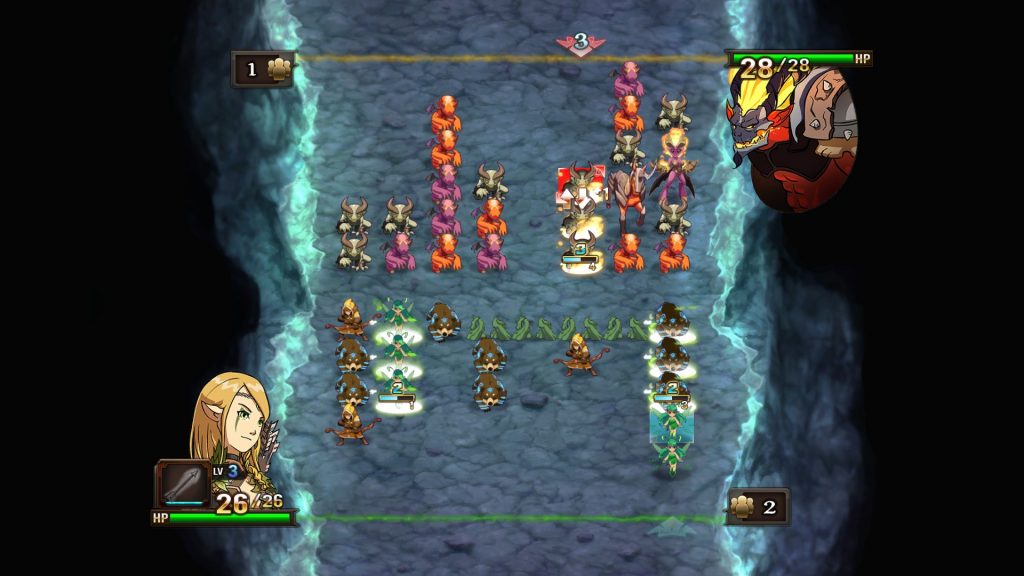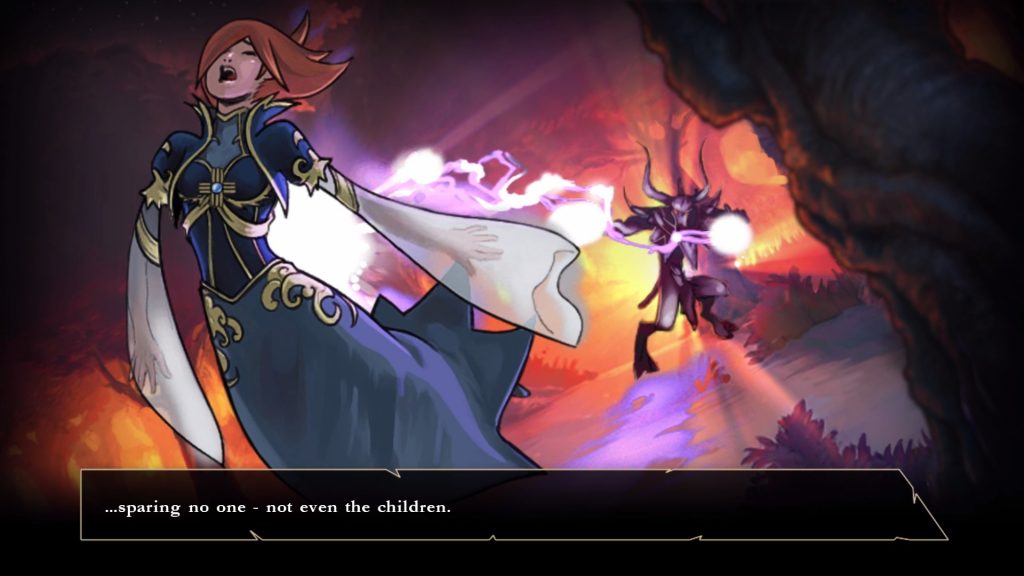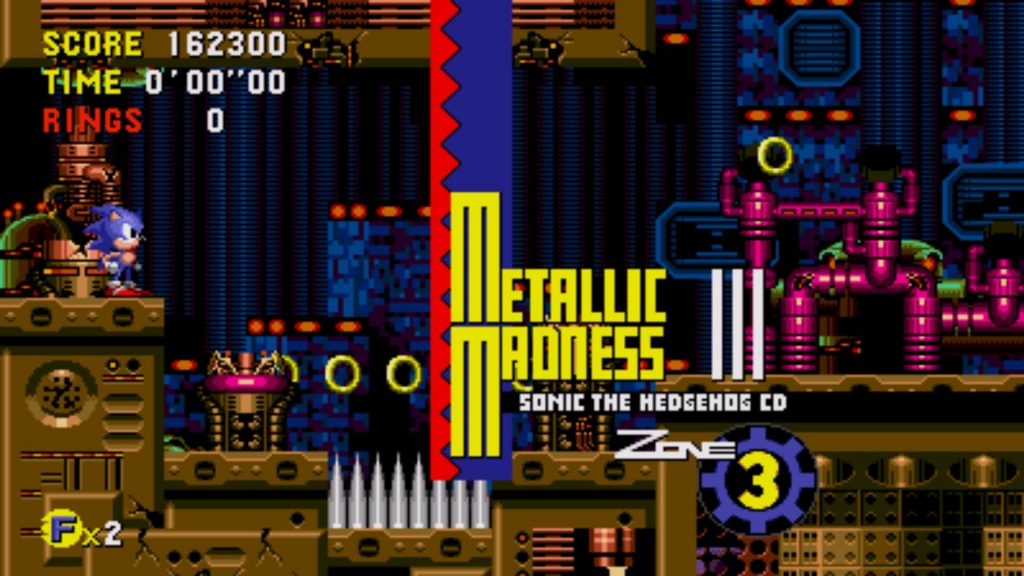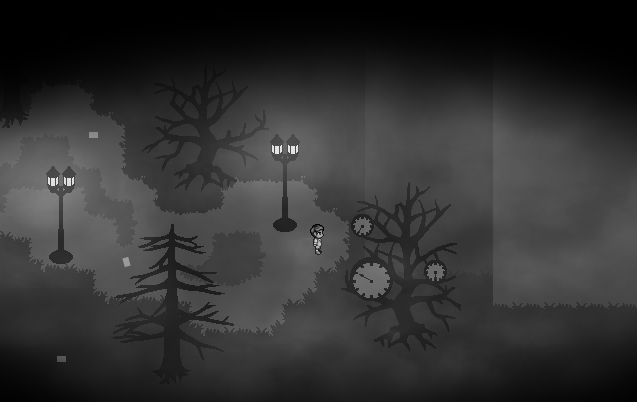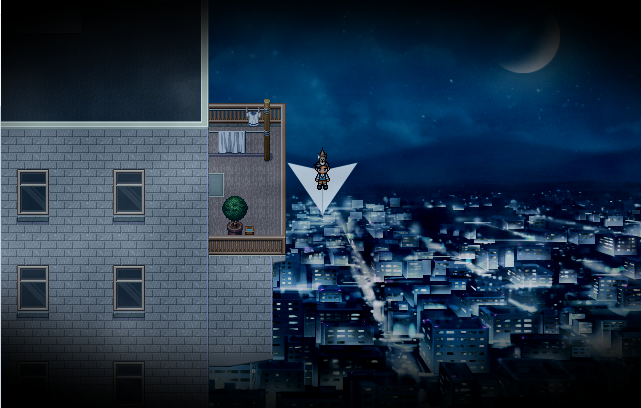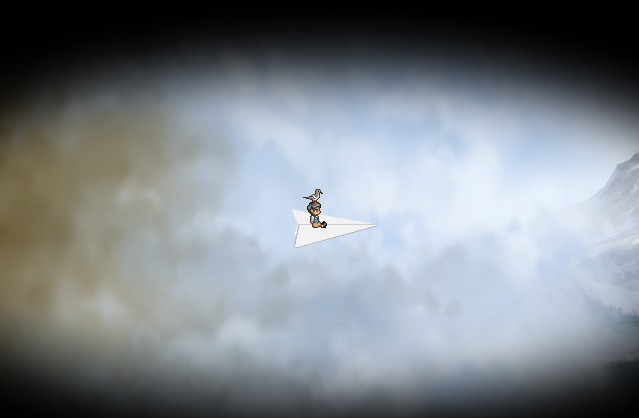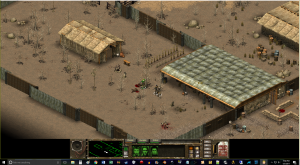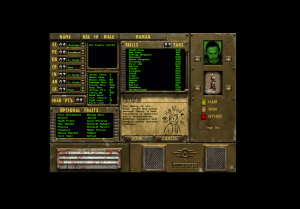MM:CoH is puzzling… in more ways than one. On the one hand, it is strategy-based game involving mythical creatures, magical beings and so on–par for the course for the MM series. On the other hand… it is also literally a puzzle game, which leaves me sitting here bewilderingly playing a goofy “match 3 colors” game from a franchise that under normal circumstances, I tend to respect as being one of the anchors in PC fantasy gaming history. At a first glance, there is something extremely appealing about this game. I’m not sure if it’s the design, the neatly organized and brightly colored units, or polished UI, but I feel that a gamer would just be naturally compelled to see what this game is all about. That being said, something about this game is… wrong. Terribly wrong. It’s difficult to explain, so let’s take it piece-by-piece.
For starters, the game’s story sucks. It’s basically along the lines of “something-something, big magical world, something-something, giant kingdoms, something–oh yeah, and then demons attack.” It’s lazy, cliche and even without playing more than an hour of the game, I already know what kind of plot I’m in store for: bland and generic heroes fight off demons and win. Riveting. To be fair though, it’s got the same plot as almost every single Fire Emblem game and those games are pretty good–admittedly for numerous reasons outside their plot though. Even so, my biggest problem when a game opens up like this is that I’m always screaming in my head at the lethargic narrator, describing these supposedly mighty kingdoms, “Why should I care? What does it mean to me? For all I know, these kingdoms deserve to get overrun by demons!” Narrations like this anger me, because the presupposition is that the player will immediately identify the kingdoms as valuable, simply because they are mighty. It presupposes that the player wants these nations to survive, simply because they contain magical creatures and races that are generically appealing to the conformist norms of a fantasy universe. It presupposes that things are simply black and white; that good will always be good and deserve to kill, plunder and pillage as much as they want, as long as it is in the name of their people group. It’s aggravating.
The plot boringly moves along this route and we are exposed to several young heroes whose families are attacked an murdered by demons. It’s not really exciting in the slightest, and just feels like it drags. The characters are generic and lack any kind of personality beyond the shallow stereotypes that they’ve been built around. You take control of a young elf girl and manage her escape and later investigation into the matters of why demons have attacked. I get the feeling that eventually you would get to choose to play as the other heroes and control their race’s units, but even that carrot wasn’t enough to motivate my progression through the game.
However, sometimes plot and setting are merely a vehicle to transport the player to a very fun game–some of the best games out there have crappy stories. I’m not sure if I can say that this is the case with CoH. The game has a lot of little pieces for you to learn, which is a good part of any healthy game. Combat consists of building armies through units that are available to you, and each unit is noticeably distinct from one another. There’s a lot of little twists and techniques you can use in combat to sway the tide of battle to your favor–you can synchronize your units by “Linking” them, build walls to play defensively, and plan out your moves in a chess-like manner. The problem is, that even though the rules are decent and possess enough strategic options for the player that they feel like they can make a difference in the battle’s outcome, it’s still just a match 3 game. The concept just feels childish in a world that I’m supposed to take (I assume) seriously. Battles have a lot going on in them, but they feel sluggish. It’s impossible to know what an enemy unit does until you meet it, so new units sort of broad-side you until you figure them out. Inherently from a gaming perspective this is not bad, but it is in this kind of game. Because the game plays out in a chess-like manner, it would be akin to your opponent pulling out random made-up pieces in the middle of a chess match and then not telling you what they do. Additionally, the tutorial of the game drags on and on, and is an annoying series of pop-up windows that is about as exciting as reading a pictureless instruction manual.
The best part of the game by far is the art. For the most part, it is clean, bright and very appealing. All of the army units have a slew of animations that are smooth and fun to watch. One that made me laugh was the skeletons–when they attack, they pull off their head and use it as a bludgeoning weapon as they charge. Character portraits have a range of stances and emotions, and they look smooth and appealing. Don’t get me wrong–they aren’t hyper-realistic or ultra-detailed, but they don’t have to be. They’re fun to look at and watch move around.
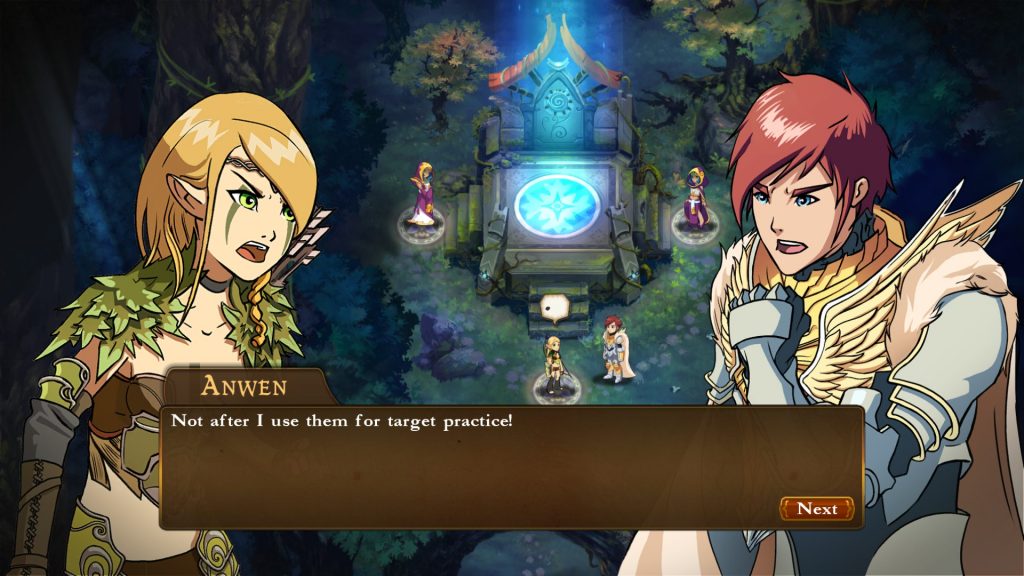
Ultimately though, I can’t personally support the game. It is clear that time and effort were put into the game’s visuals, and even though it is a low-octane puzzle game, the designers did add as many rules as they could to spice up gameplay to the best of their abilities. In the end though, I’m still just matching 3 colors together in a manner that feels off. At times the game feels like a Flash game on Kongregate–or at worst a micro-transaction army-based game on the Android Market. In my mind, it teeters on the edge of T3 and T2, but I do think that this would be a great game for casual gamers looking for a lot of time to waste, and so I submit that this game belongs to Tier 2. For me though, I desire something a bit more challenging.
